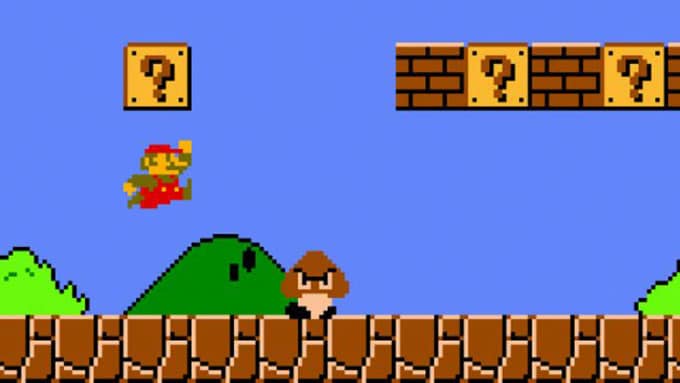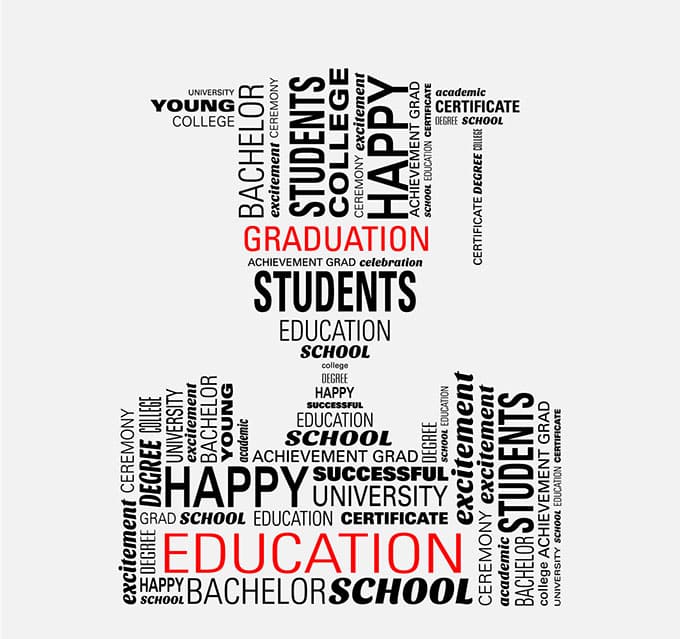Image Source: freepik
We’ve all heard this quote somewhere, sometime in life – Motivation is what gets you started. Habit is what keeps you going. Some of us also have it pinned to our office desks. If you try and pay a little more attention to detail, you’ll be able to figure out that motivation and habit are very closely linked in the process of ‘achievement’. Motivation is the propeller to habit formation. That motivation is for a ‘variable reward’, a concept that Nir Eyal has beautifully nailed in this book titled ‘Hooked’. That’s conscious habit.
But to a large extent, human beings are puppets at the hand of what is known as the unconscious habits. To explain the concept of unconscious habits, writer David Foster Wallace shared a short tale with a group of college students.
The story goes something like this: There are two young fishes, as usual swimming, when an older fish meets them in the way and says, ‘Morning, how’s the water?’ The two fish, confused, keep swimming for a while, and one of them just looks at the other and finally asks, ‘what’s water?’” It’s out of their routine habit of swimming that they simply have it imbibed in them. THAT is the power of unconscious habit. You just keep doing things without even knowing you are habituated to acting that way. In this ‘unconscious’ form, habits are neither good nor bad.
However, needless to say, human beings are ever inquisitive. They experimented even with habit, and analyzed how habit patterns actually work, suggesting ways to alter those patterns. Though biologists played a big role in unlocking habit patterns, altering and changing habit patterns was and has always been an area of intense interest to marketers and researchers. Why? Because only by getting people to form a positive habit of using their products or services, or buying from their brand, can marketers assure repeat purchases, loyal customer-ship, and retention.
Gif Source: giphy
Marsha Lindsay, Chief Strategist For Growth, Brand And Innovation at Lindsay, Stone & Briggs, puts forth the need for marketers to understand and implement habit as a marketing strategy. She says, the lack of recognition of habit as a driving influence in all of marketing could explain why so much marketing disappoints where ROI is concerned. Switching one time isn’t considered a success, either. The very definition of a strong brand is that its purchase is habituated.
With this, let’s delve deeper into how to crack the habit formation code, and create new habit patterns in people.
Inculcating Conscious Habits – 4 Key Components
As pointed above, Nir Eyal has explained the entire process of inculcating new, desirable habits. There are four key components, as per Eyal, that are the key to manufacturing habits:
- Trigger
- Action
- Reputation and experience/Variable reward
- Investment
These four components are the essence of creating a habit loop, something that keeps people coming back again and again and again.
Most successful companies today, have reached that level, having mastered the art of manufacturing habit using these four components. Let’s understand all this with the most famous, most familiar of examples that all of us are hooked to in our daily lives: Facebook
By cracking the four components of habit formation, Facebook has gotten everybody using it extensively, so much so, that its users spend about 950 million hours on it each day! 
Image source: freeepik
Triggers that Facebook uses: People’s need to socialize, find out what other people are up to, and know what their friends are doing right now in real time.
Actions that users take based on these triggers: Sign-up, login, browse, chat on the messenger, like their friends’ posts, search for new friends (and more)!
Investment: Users get emotionally and socially invested in Facebook because they get to keep in touch with everyone they know. You invest in relationships and feel more connected with the world, so you devote time and get committed to stay in touch.
Reward: People ‘like’ what you share. They also form a closer relation with you on a daily basis even if you live far away. You find old friends, make new friends. People who you’ve not seen for a long time add you in their network. You feel happy and delighted to connect and socialize.
Facebook’s idea is brilliant. Isn’t it? It uses your emotions and the need to socialize as the key to habit formation. It is something that everyone should take a learning from.
Marketers and product-based companies have every reason to be grateful to those who have unleashed the secret to conscious habit formation. However, marketers and product marketers themselves have pushed the envelope to invent habit-forming products. If you, too, are a marketer or product-focused business, you must focus on the neuroscience of habit formation. In the subsequent paragraphs, we disclose why and how.
Why Marketers Must Focus on Habit Formation
The idea of applying the neuroscience of habit to is to increase the stickiness factor for a given product or brand through a certain variable reward. This variable reward should entice a craving for people never to leave the habit loop.

But even before you create a strategy around variable reward, you should clearly understand if your product and/or brand is a ‘facilitator’. Does it have the power to create a habit around it? A product or a brand is said to be a facilitator if it has excellently planned out triggers and a great usability design. It is when you can successfully lead the user into the habit loop that you can plan to keep him coming back.
Consider Slack as an example. Nir Eyal believes that Slack’s enterprise app is truly habit-forming. The app facilitates users at every step to automatically and easily take action quickly without putting much thought into app usage. It is all so easy and convenient that it has become a conscious habit for employees to communicate with each other on Slack. People don’t email each other if they have to casually inform or talk. They Slack. To read on how Slack wins at habit formation, read this full post. It is because of the ‘ease of usage’ and the whole experience that Slack offers that people keep coming back to using this as their preferred internal communication tool.
It is simply bewildering to know that there is a whole branch of science dedicated to understanding how habits form inside the brain, how this process can be altered to create certain desired habits, and how those habits can be promoted.
For marketers, the neuroscience of habit formation is gold. It simply translates into an unfailing formula to repeat sales and retention. It’s every growth hacker’s and marketer’s dream to keep getting people to use their products. Creating that sort of loyalty is the key to retention. That’s why marketers must focus on the neuroscience of habit formation.
8 Proven Neuroscience Hacks in Habit Formation
Neuroscience hacks that have been time and again used by marketers are excellent cheat sheets for marketers. Let’s read about some of them and how they can be used in habit formation.
The Intrigue/Curiosity of Reward Schedule
A clever loop is created when it skyrockets ‘curiosity levels’. By creating reward schedules, marketers can spike curiosity levels and keep users hooked. Consider video games. They are the perfect example of how a reward schedule can keep users glued to playing video games. With every level unlocked, the player is rewarded with something that he can ‘use’ to be ahead of competing users in the game.
However, when reward schedules are predictable, our dopamine levels stay controlled. Adding some variability and unpredictability to the reward schedule can push our brains to relentlessly continue a certain habit, in search for the next reward.
A well-designed variable reward schedule is a great hack to sustaining a habit loop. This holds true for video games AND for software products too! Here is an example – Duolingo is a language learning software. And as we all know most learning a language has a very predictable reward path. It is plain, boring! There is no surprise or variable reward about all the hard work you put in. Duolingo decided to break this boredom by bringing in variability and unpredictability in reward schedules. It does this by offering its learners/users a currency called ‘XP’ on their path to learning. Users can earn their currency by completing their exercises. How many ‘XPs’ they earn is based on their performance and number of exercises they complete. Using this currency they can unlock the various achievements. Learning a language seems so much more fun and rewarding, and an experience to look forward to.
The Impact of Sensory Branding
Ivan Pavlov, in his random experiment on measuring saliva when the dogs were fed, ended up making some significant discoveries. He presented the idea that food is an unconditioned stimulus, and a dog will not only necessarily salivate on ‘seeing’ food. Anything the dog ‘associates’ with ‘food’ will make it salivate. Same goes for human beings too! We start craving food even when we smell it from far away! We don’t necessarily end up craving only when see food in front of us. Now imagine the power of a multi-sensory experience!
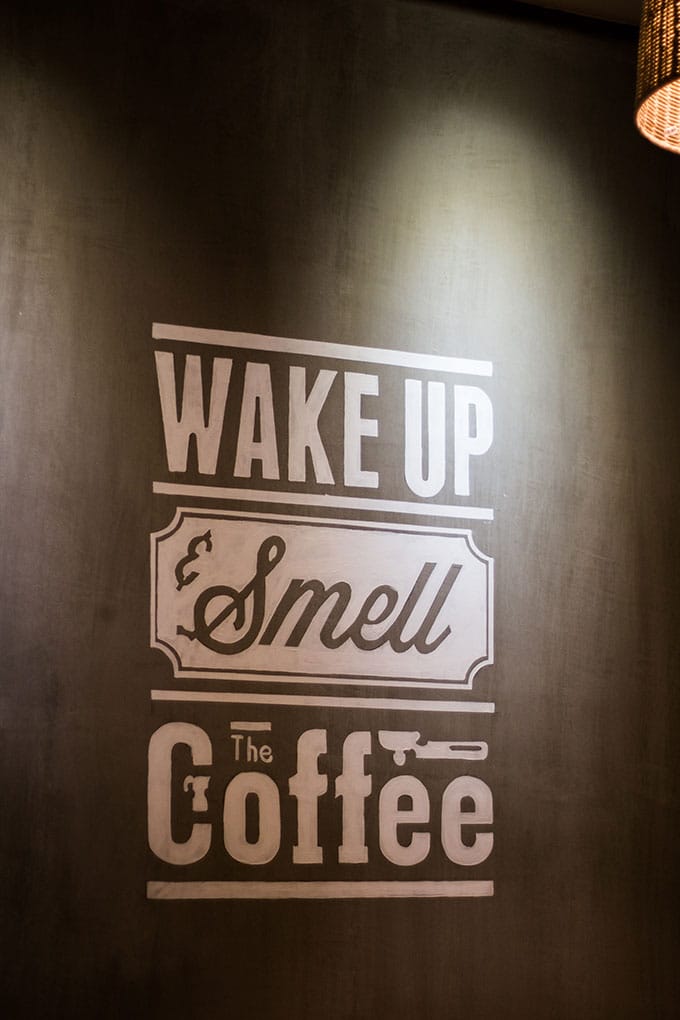
Sensory branding leverages the idea of associating different senses with the experience. Marketers understand that along with just showing a Coca-cola in a television, a gulping sound, the sound of soda being poured in a glass, and the bubbles settling on the top of the glass, all create a ‘sensory’ more appealing experience. Such an experience creates much more of a craving.
Brand Sense – Build Powerful Brands through Touch, Taste, Smell, Sight, and Sound, by Martin Lindstrom, sums this hack beautifully. It concludes that brands that appeal to multiple senses bring a more fulfilling experience, win at creating more powerful urge, and are therefore more successful than others who don’t leverage sensory branding smartly.
The kind of urge that multi-sensory branding creates is a must for habit formation. Consider your movie watching experience. When now you have the option to watch movies in 4dx, do you ever think about watching a ‘War of the Planet of the Apes’ in plain 2d?
The Pull of Ease and Convenience
Some of the most popular products have created a usage habit in users because of the sheer ease with which they can be used, and because how they’ve made life simpler. The vacuum cleaner made it damn simple to remove dust particles from carpet, which is an ordeal with the broom. Vacuum cleaners became a part of life soon after. Washing machines replaced hand washing of clothes. They broke old habit patterns of washing clothes by hand. Now people are habituated to washing machines.
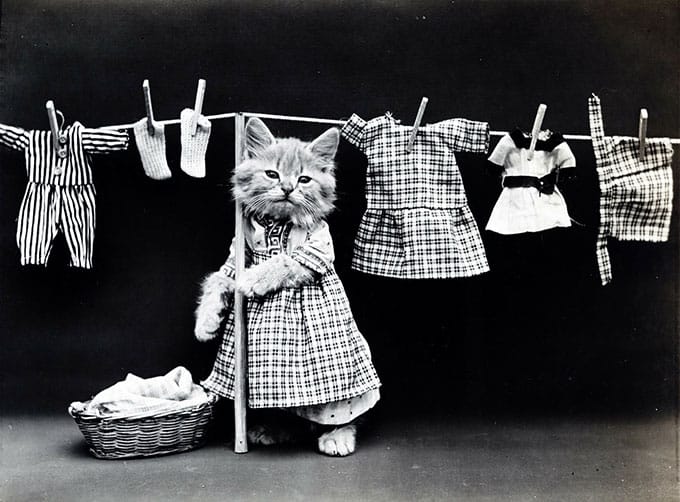
‘Ease’ is basic. Everyone wants that the products that they buy don’t require them to wrap their heads around how to use them. And, are convenient, save them effort, as well as time.
That is why most of us have made the switch from brick and mortar shopping to eCommerce. That’s why no longer we go to banks to withdraw money, and PayPal has almost replaced physical cash. Such is the pull of convenience – it breaks old habits to replace them with new, more emerging technologies. Habits form and continue to become stronger when they are fed usability ease.
The Joy of Discounts, Freebies, and Incentives
Picture this. You visit your nearby grocery store to buy jalapeno hummus, when the guy at the counter offers a free sample of pepper bread sticks to try along with the dip. The next thing you end up doing is asking him to add the bread sticks to your bill. You just wanted to refill your hummus stock, but having tasted the free sample you felt an urge to buy the bread sticks too because they complement the dip perfectly!
Now, every time you buy hummus, you have to buy the bread sticks along. The ‘free sample’ was the perfect trigger that made you take the action, which is to try out the breadsticks with hummus. The ‘experience’ that it ‘tastes’ so good and was absolutely complimenting was the ‘variable reward’. You invite friends over for movie and snack, and serve the dip and sticks. You tell them how awesome these are. They like it too, and end up buying because they get their sample free too. That’s how investment is created.
Simple, tried and tested!
The Power of Persuasion and Nudge
Image Source: freepik
Humans aren’t rational (always). When presented with an emotional appeal, they can be manipulated or steered towards acting in an irrational manner. That’s the power of a gentle nudge. Nudge can not only steer human beings towards taking a certain ‘profitable/desirable’ actions, but can also be quite smartly used in habit formation.
Consider habitual or repeat buying behavior. eCommerce players use the power of persuasion using tools such as ‘push notification’, which make it very difficult for people to leave the habit loop.
By using push notifications, eCommerce players are cleverly increasing interactions with triggers. Having a trigger present at the right time, on the right channel, for the right audience, increases the chances of users to enter the habit loop. Having a trigger cleverly placed throughout the customer journey creates the power to not let him leave, and buy again and again and again. Unless, the user becomes a habitual shopper from your website.
The Charm of ‘Emotions’ in Customer Service
Practically every decision that a person takes has more to do with emotions rather than logic. People take decisions and later justify them using logic. They trick themselves into feeling that what they make right choices. In the terms of neuroscience, this is known as the cognitive bias.
But why are people naturally habituated or inclined towards acting emotionally rather than rationally? That’s because emotions are the basis of memory formation! Consider this scientific fact – The amygdala has a major role in emotional arousal, is responsible for mediating neurotransmitters. Memory consolidation requires mediation of these neurotransmitters. What this means that emotional arousal activates the amygdala, which impacts memory formation.
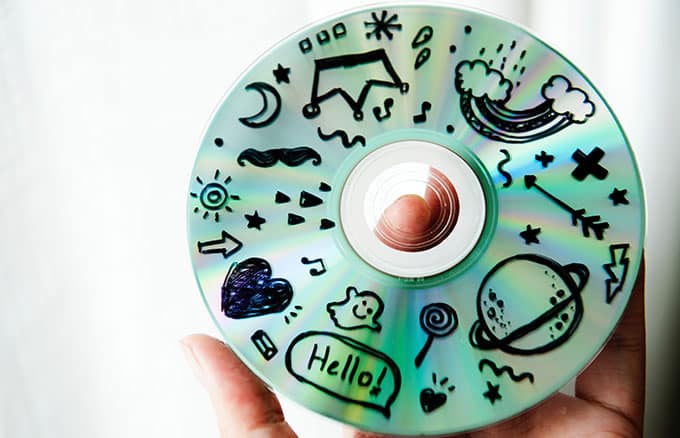
This natural emotion-memory link is a boon for marketers and customer service. According to Walter Chen, co-founder of iDoneThis – Positive experience is the start of a positive association, which builds upon itself over time. One transaction or interchange turns into a relationship. Zappos, Wistia, and MailChimp are three companies that have a business approach which accentuates the positive, and, as a result, their customers are both passionate and loyal.
In customer service, you can use the principle of likability to provide people an emotional experience. The practical application of this principle in customer service involves putting a picture of a customer service rep on the customer service chat apps. This is what makes people ‘like’ interacting with the app. The picture of a human puts them at ease.
Creating a positive, emotional bond through customer service, keeps customers coming back for more.
The Assurance of Trust and Credibility
Wouldn’t you second that you’d never buy from a dealer or website who fails to provide a warranty certificate for his products? The need for trust and credibility is embedded deep inside the human brain. This ‘trust bias’, works as a trigger for people to take a desired action.
When you see an authority figure promoting a product, you buy that product. When you read a review on a website about product quality you buy that product. When a conversion optimization guru talks about a SaaS product in his webinar, you sign up for that product. That’s how strong the trust trigger is.
In habit formation, however, triggers need to be placed throughout the customer journey. The trust trigger too must not be a one time accelerator for making users enter the habit loop. You can leverage trust even after the person has bought the product, while he is using it, and in his entire experience with your product.
For example, using a video testimonial showing ‘5 best ways to maximum ROI from x product’ gives your user trust and credibility that you are allowing him to make the most of your product. In a way you are also creating an emotionally enriching experience for your customers, and this positivity that they experience is very likely going to make them ‘habituated’ to trusting you.
In 2018, Amazon has emerged to be the most trusted brand in the eCommerce category. And, we don’t need to highlight the numerous reasons that Amazon qualifies on for this title. Trust isn’t just a matter of what you show on your website. It is also a promise of quality, which Amazon never fails on.
The Reward of User Reciprocity and Engagement
User reciprocity and engagement in a product are signs that they are emotionally invested in it. The reciprocity principle has it that when given something in return a user performs the desired action.
Recently, I attended a launch party where I was given ‘discount coupons’. I was obliged to write a review blog post about the launch party. I felt the need to reciprocate. I invested my time in writing the review, and purchasing from them using the coupon. They won meaningful engagement from me.
SaaS products offer ‘free trials’ in hope of hitting the reciprocity principle. Users feel obliged more often than not, to try them out, sign up to become billable users, and also give feedback. That sort of engagement and reciprocity is important for SaaS business owners.
Spotify offers a 30-day free trial for their Premium plan. Users can cancel it anytime without any cost. Once the free trial ends people rarely end their membership because it costs only $8/month. They feel obliged to continue with the plan and reciprocate.
Once you’ve got the feeling of reciprocity imbibed in a user, they find it hard to leave. Habit gets the better of them.
That’s a Wrap
Habit is a matter of getting someone to try out what you have to offer. It is then about creating an unforgettable experience with that offer. And, to keep reminding, re-reminding users about the kind of outstanding experience they had using your product. No rocket-science. Just neuroscience!


